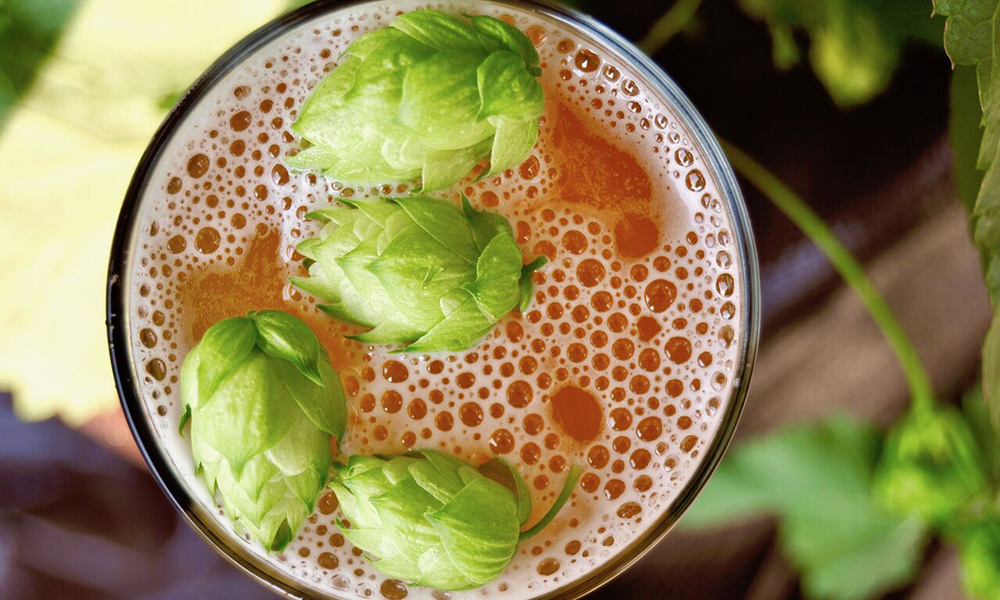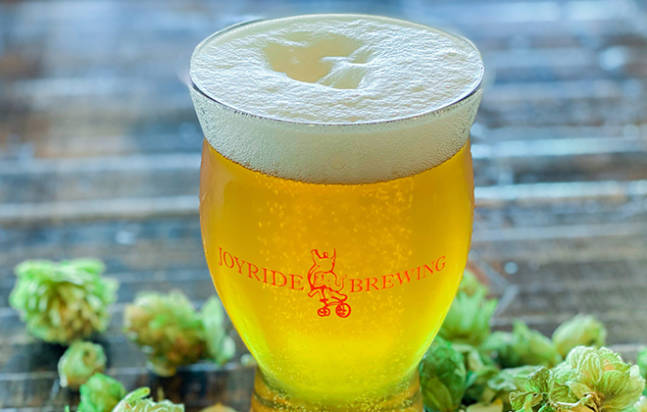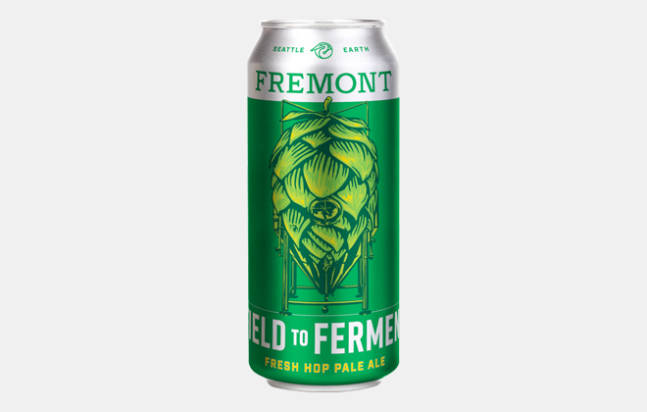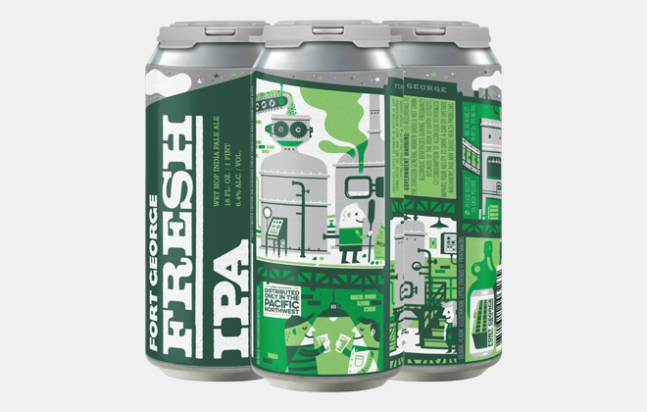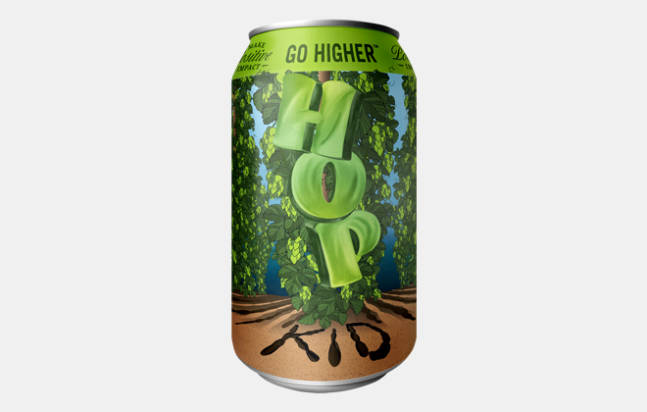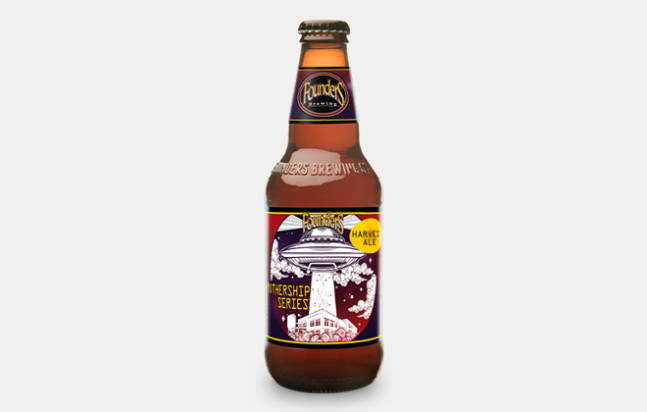In 1996, Sierra Nevada Brewing made a beer called Harvest Ale using undried, fresh hops instead of the typical dried hops that brewers have relied on for centuries. Today, fresh hop season is a full-on celebration for beer lovers and breweries that have direct access to hop fields.
At FlyteCo Brewing in Denver, for example, hops come in on an extra special delivery from Billy Goat farms in nearby Montrose. The hops are harvested in the morning in mid September, the FlyteCo team flies out there, and then a few hours later the hops are in the boil. What’s more, the grain, yeast, and hops are all local to make this a 100 percent Colorado beer.
“The overall experience is well worth the extra effort for a fresh hop beer,” says FlyteCo co-owner Morgan O’Sullivan. “We generally use it as an excuse to collaborate with our friends at other breweries and experiment with new styles and flavors for the taproom.”
What Exactly is a Fresh Hop Beer?
The terminology isn’t as straightforward as one would hope for. While many breweries use the word fresh, others will use wet and others still use harvest. These were all once the same thing: beer made with undried hops. But some breweries over the past half decade or so have started using whole hop cones that have been dried and calling them fresh hop beers. For the sake of clarity, any mention of fresh hop here means an undried hop, as it should.
Whether you call them fresh hop, wet hop, or harvest ales, however, the gist is the same: beer brewed with whole, recently harvested (often within 24 hours) hop cones that are undried when put into the boil.
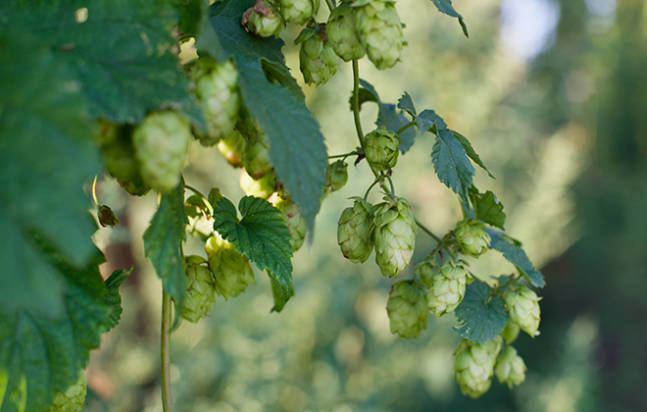
What Makes Fresh Hop Beer Special?
Even the most hop-filled year-round beers don’t have the same flavors as a fresh hop beer can. What’s more, even fresh hop beers that use a similar recipe year-over-year will taste different in each iteration because the style is so tied to agriculture and what weather the fields were exposed that year. Assuming a brewer highlights the natural flavors correctly (as any good fresh hop beer deserves), what you taste is what nature delivered.
“I like to use the analogy of ‘what if basil was only available fresh once a year’ — pizza places would be going crazy for a couple of weeks,” says Dave Bergen, co-founder and director of brewing and marketing at Joyride Brewing Company in Edgewater, Colorado.
Fresh and dried basil have similar attributes and flavors, but are also inherently different. The same goes for hops. Bergen describes it as a “greener” flavor than beers made with dried hops, so expect herbal and vegetal notes that showcase hop flavors in the most intense way.
Besides the taste, Bergen has an interesting take on why fresh hop beers are worth making. He compares it to a Jimmy Dugan (played by Tom Hanks) line in A League of Their Own about how something being hard to do “is what makes it great.”
“Making fresh hopped beer is super stressful,” Bergen says. “It comes at a time of year when the taproom is still very busy and we need to be producing as much beer as possible, but you don’t know the exact date the hops will be ready so you have to keep a fermentor empty and on stand-by.”
That said, “wet hop beers are fun to brew,” Bergen adds. They come in a burlap sack and fill the brew room with a hoppy fragrance. “You start picking through them and opening them up to see the yellow lupulin glands on the inside. You think about diving into them like Scrooge McDuck. Then you load them into the tank, add the wort to them, and now the scent-o-meter is going off the charts and everyone within a three-block radius can smell that you’re using wet hops today.”
That once-in-a-season excitement is part of the draw.
“If wet hops were available 365 days a year, I don’t think we’d go through this process every time,” Bergen says. “But for one week, it’s kind of magical.”
When Can You Buy Fresh Hop Beers?
Unlike a marzen or Oktoberfest style beer, there’s no set date for when fresh hop beers start to come out. They’re simply made when the hops are ready to be harvested. Generally, this falls in late summer and early fall, depending on the region and hop variety. If you live in a place where fresh hops are readily accessible, check in with your favorite breweries in late September to see if they have plans to put a beer together and when it’s expected to be released.
That ambiguous start date goes for the end date as well. Fresh hop beers are the definition of limited availability. When they run out, they’re out until the following season (and only if the brewery is able to source the hops for the next season).
“Hops need to be dried almost immediately after harvest so they don’t get mildewy, so the window to use them while they’re fresh (or still wet) is incredibly small,” Bergen says. “A chocolate stout may taste better on a snowy day in the middle of winter, but it can still be produced in the heat of summer. Once fresh hop beers are tapped, they have very short shelf-lives and start to degrade quickly, so you can’t lallygag when they start getting released.”
Fresh Hop Beers to Seek Out This Year
The best place to get your hands on fresh hop beers is at a festival or tap takeover. Colorado’s Joyride, for example, has a Fresh Hop Festival with 16 beers from around the state. The next best option is to turn to your local brewery. But people outside of major brewing and hop growing regions of the country aren’t completely out of luck. There are a few fresh hop beers that are canned and shipped to retailers across the country. Whether you’re one of the lucky ones to live in an area with fresh hop beers or you want to hunt them down, these are the ones to keep an eye out for.

FlyteCo Brewing
It feels appropriate that planes are involved in FlyteCo’s fresh hop beer. The Denver-based brewery is owned by licensed pilots who fly in small passenger planes from Erie, Colorado, to Billy Goat Hop Farm in Montrose to pick up the fresh hops used in its seasonal beer. The whole thing is done in the morning before noon to keep things as fresh as possible. Keep an eye on the brewery’s social media page for the full release details.
Fresh Budz Wet Hop IPA, Joyride Brewing
Joyride Brewing is a champion of Colorado hops, though you’ll have to make it to the Edgewater brewery (or at least to the region) to get a taste of its fresh hop beers. The Fresh Budz Wet Hop IPA uses cascade, chinook, and comet hops and is available starting in late September. Joyride also takes a different tack than many breweries with its Wet Hopped Distilsner Colorado Pilsner, which blends fresh hops with a clean pilsner using grains malted at the facility owned by Denver’s Leopold Brothers. “With our location across the street from Sloan’s Lake and with our 150 seat rooftop deck, we brew a lot of patio beer,” Bergen says. “I wanted to incorporate wet hops into a patio beer this year.”
Celebration IPA, Sierra Nevada
The brand that started it all also has one of the only widely available fresh hop beers in the country. Sierra Nevada’s Celebration IPA uses cascade and centennial hops from the Pacific Northwest for a burst of floral and pine notes. The arrival of Celebration IPA is the sign of the holiday season for many beer lovers, and is available from October through December.
Field to Ferment, Fremont Brewing
This Seattle-based brewery uses fresh centennial hops mixed with centennial dry hops for a citrusy, fruity, and grassy fresh hop pale ale available starting in September.
“I’ve been up to Seattle and Yakima a few times during harvest time and Fremont always blows me away with their fresh hop game,” Bergen says. “The last time I was there I think they had something like five different single-hop IPAs on plus a few blends. For a wet hop nerd like me, that was amazing.”
Chasin Freshies, Deschutes Brewery
This IPA is made with dried German callista hops (sourced through Bitburger, the German brewery that helped develop the variety) and wet hops from Idaho farms. The Oregon brewery used triumph and callista wet hops in 2022.
Fresh IPA, Fort George Brewery
Fort George’s location in Astoria, Oregon, is a hell of a great place to brew beer. In 2022, the brewery received 2,000 pounds of fresh luminosa hops from Indie Hops. The brewery calls out piney bitterness and snappy sweet candy hop flavors in this year’s version.
Hop Kid, Elevation Beer Company
Elevation Beer Company is another Colorado brewery that uses the Montrose-based Billy Goat Hop Farm. Hop Kid is a hazy beer with fresh stone fruit, citrus, and pepper notes. It uses a mix of chinook, sabro, and wet cooper hops that go from the farm to the brewery in less than three hours. Six packs are sold throughout Colorado.
Harvest Ale, Founders
Another craft brewing stalwart, Founders uses hops from around the brewery in Michigan to create Harvest Ale. You can find Founders in seemingly countless beer stores across the country, but this piney and citrusy fresh hop beer is limited. It’s part of the brand’s Mothership Series, and can only be picked up in bottles at Founders taprooms in Michigan.
Learn More
